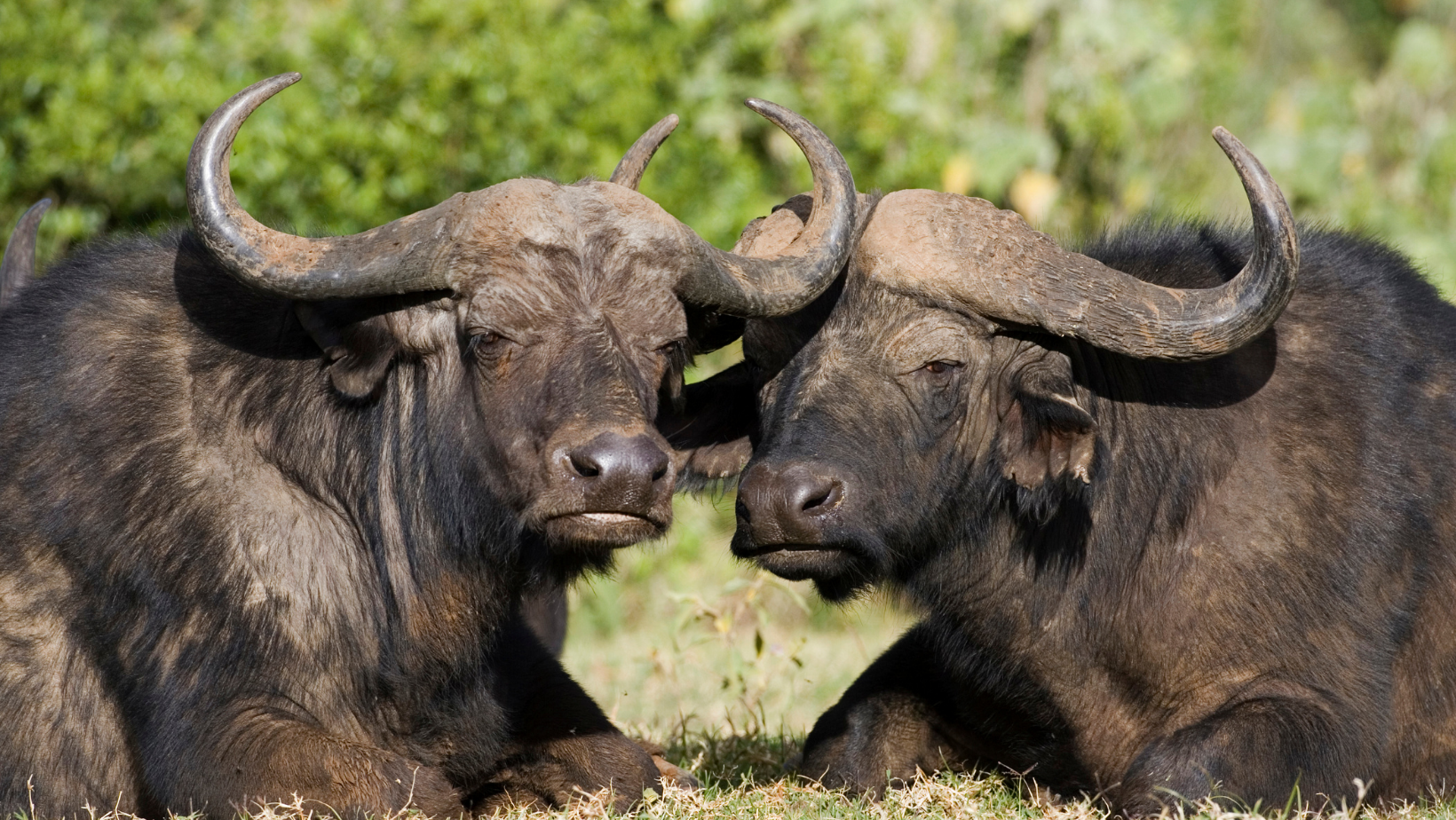10 Fun Facts About the Cape Buffalo
10 Fun Facts About the Cape Buffalo. The Cape buffalo, also called the African buffalo, is a common animal in Tanzania’s national parks and game reserves.
These buffalo are one of the “Big Five” game animals, which includes some of Africa’s most sought-after animals. They are known for their giant size.

1. Cape Buffalo are one of five types of the species
Cape Buffalo
The Cape Buffalo, whose formal name is Syncerus caffer, is native to Africa. Most of the cows in Africa are this type. South Africa, Kenya, Tanzania, Zambia, and Zimbabwe are all in their area.
Africa is home to five different types of buffalo: the Cape buffalo, the Dwarf buffalo, the Forest or Congo buffalo, the Sudan buffalo, the Nile buffalo, and the Virunga buffalo.
Water buffalo and cape buffalo are not the same thing. People in Asia have tamed a different type of buffalo and kept them as pets.
2. They’re very big
The strong and powerful bodies of cape buffaloes are well known. Out of the five types, they are the biggest. Males, called bulls, can be anywhere from 500 to 900 kilograms (1,100 to 2,000 pounds) and stand about five feet (1.5 meters) tall at the shoulder.
Cape buffaloes are about the same height as big cattle breeds, but they are stronger and have a stockier build. An adult Cape buffalo can weigh as much as a small car, to give you an idea. A large male buffalo weighs about the same as a small car like a Mini Cooper, which weighs about 2,600 pounds (1,200 kilograms).
3. A mother buffalo leads a group of calves.
Buffaloes like to be with other buffaloes, so they often live in groups, especially during the dry season when food is scarce. Herds can have anywhere from a few dozen to several thousand people. The mother is the most powerful female in these groups and is responsible for leading the others.
Mature males usually hold the most important roles in the herd. These guys are competing to be the first to mate. Their position is based on things like their age, size, and strength. Younger men often hang out with other single men until they are strong enough to compete for a spot in the main pack.
4. They have a “boss.”
The boss refers to a part of the Cape buffalo’s horn structure. This is the strong shield that the buffalo’s horns make where they meet at the base of its neck. As males age, this shield transforms into a hard, bony structure that provides significant protection when they engage in combat with other males or defend themselves against predators. The boss is so strong that it’s almost impossible to hurt, making it a natural helmet.
The horns are big and curled, going outwards and downwards and then back up and inwards. They can fight off animals like lions with their horns because of their shape and points.
5. The Cape Buffalo Play Team Defense
The Cape buffalo protects its group by using smart ways to defend itself. When faced with threats, they show remarkable strength as a group. They surround young, sick, or old people in a protective circle, with the strongest members facing outward to face any possible attackers.
African wild dogs, lions, hyenas, and alligators are some of the animals that eat adult African buffalo.
6. They’re aggressive and hard to predict
Cape buffaloes are known for being mean. They act like they are charging or making loud noises to scare away predators. Ignoring these warnings will allow them to start coordinated charges. Another thing is that Cape buffalo will chase and approach predators, which often stops their attacks.
Cape Buffaloes are known as the “Mafia of the Bush” because they are tough, loyal, and won’t give up. Due to their wild nature, they remain untamed and do not produce any bred offspring. People also call these animals “the Black Death” or “the widowmaker” because they are so dangerous.
7. Elk and Cape Buffalo get along well.
The relationship between the Cape Buffalo and the Oxpecker bird is beneficial for both of them. Buffalo dislike ticks as they irritate their skin and can transmit diseases. The Oxpecker bird comes in. It is excellent at getting rid of ticks. The Cape Buffalo has bugs on its skin and in its fur that oxpeckers eat. This helps the cow by lowering the number of parasites it has to deal with, and it gives the bird food.
With oxpeckers, you get an extra prize. They sort of alert the buffalo group when something is amiss. With their sharp eyes and sharp senses, they can tell when danger is close, and they make warning calls to let other buffalo know about possible risks.
8. Most of the time, they eat grass.
Cape buffaloes usually live in woods, savannah grasslands, and floodplains. They like to live in places with lots of grass and thick brush or trees for cover. Since they are vegetarians, they mostly eat grass and often move to places with lots of grass.
When it rains, there is a lot of grass, so that’s what they eat most of the time. In times when there isn’t much grass, Cape buffalo will eat other plants, like leaves, sticks, and even bark.
The Cape buffalo, like many other animals, is a ruminant, which means it has a special stomach with four chambers. They can digest fibrous plant materials well and get the most protein from them.
9. Cape Buffalo Rest in Mud
You can often see cape buffaloes soaking in mud, which is beneficial for them in more than one way. In the summer, it helps them stay cool, keeps bugs from biting them, and soothes skin irritations.
It can get extreme in the desert, and heat stress is a real problem. They feel cool as the mud slowly dries on their skin after they sink their bodies into it. They can beat the heat and keep their bodies at a comfortable temperature with this natural air cooling.
Bug-biting insects like flies and ticks can’t get through mud because it forms a barrier. By covering irritations with a relaxing layer of mud, wallowing in mud can also help with itching and pain.
10. They’re really good at swimming
One might not think that such a big animal would be good at swimming. But this cow has a wonderful skill: it can swim with grace and drive. In their natural environment, they often find rivers, streams, and bodies of water. Cape buffalo are excellent at moving through water, whether it’s a calm river or a muddy pond. They can stay floating and move quickly because their bodies float and their legs are strong.
For Cape buffaloes, swimming is not a relaxing thing to do. They depend on their swimming skills to get around the grassland and get away from animals that aren’t good at swimming.
Buffalo Cape Quick Facts
Cape Buffalo is its common name.
Syncerus caffer is its scientific name.
The shoulder height is between 4.6 and 6.2 feet (1.89 m), and the body length is between 8.2 and 11.5 feet.
Between 1,100 and 2,200 pounds
The wild species lives for 15 to 25 years and eats mostly plants and grasses.
Habitat: In sub-Saharan Africa, they live in savannahs, grasslands, forests, and swamps, among other ecosystems.
Conservation Status: Least concern


















